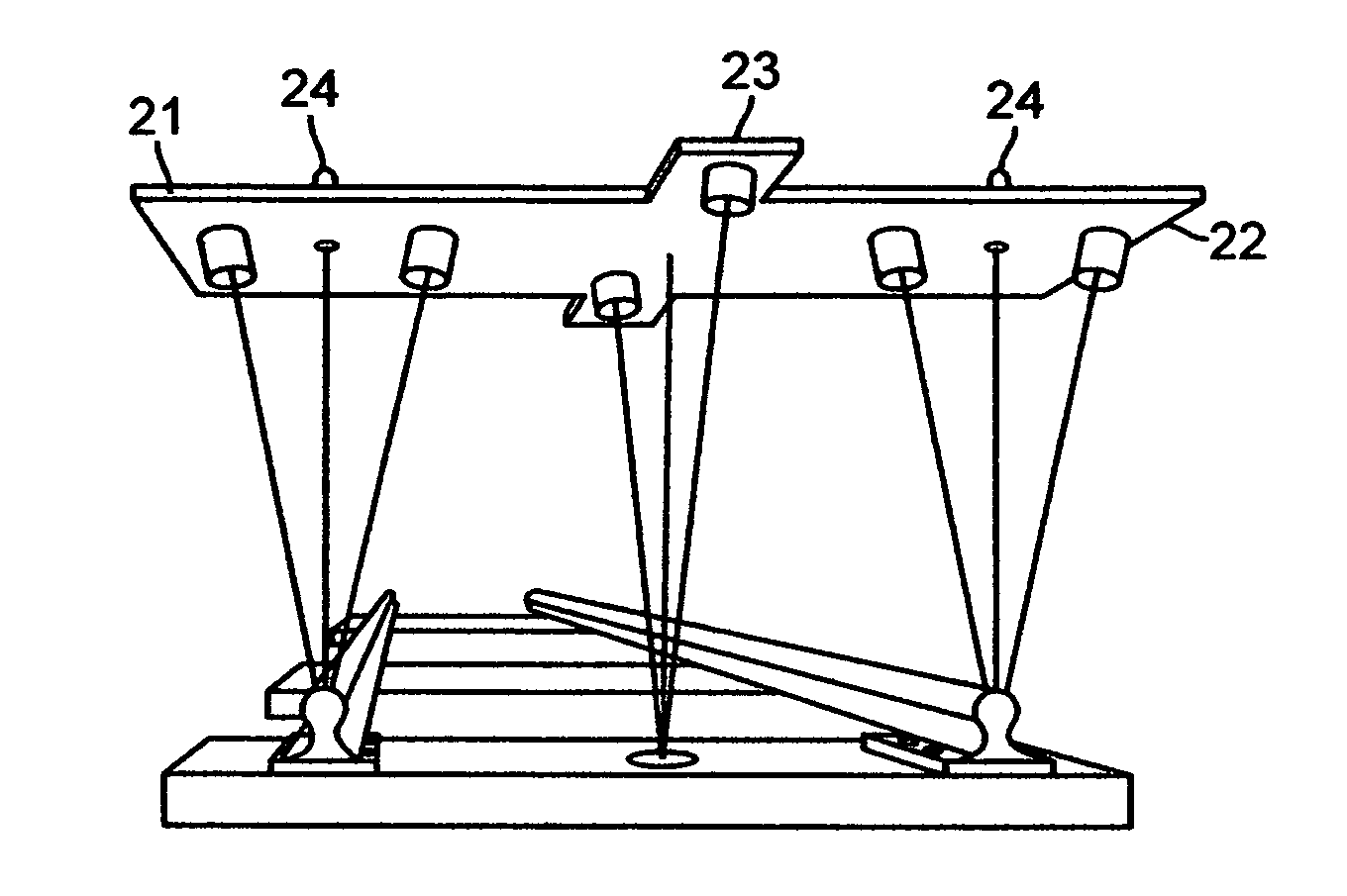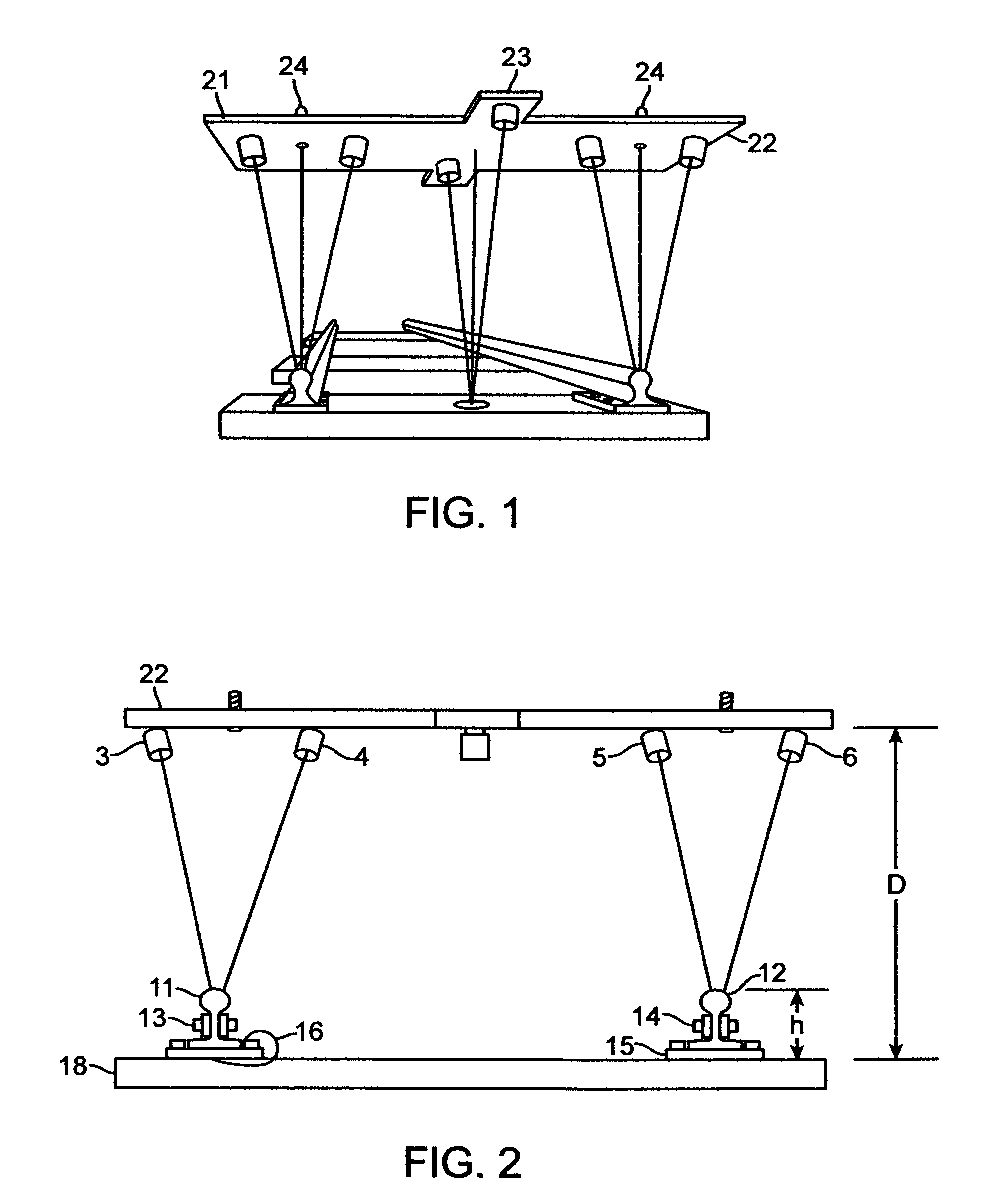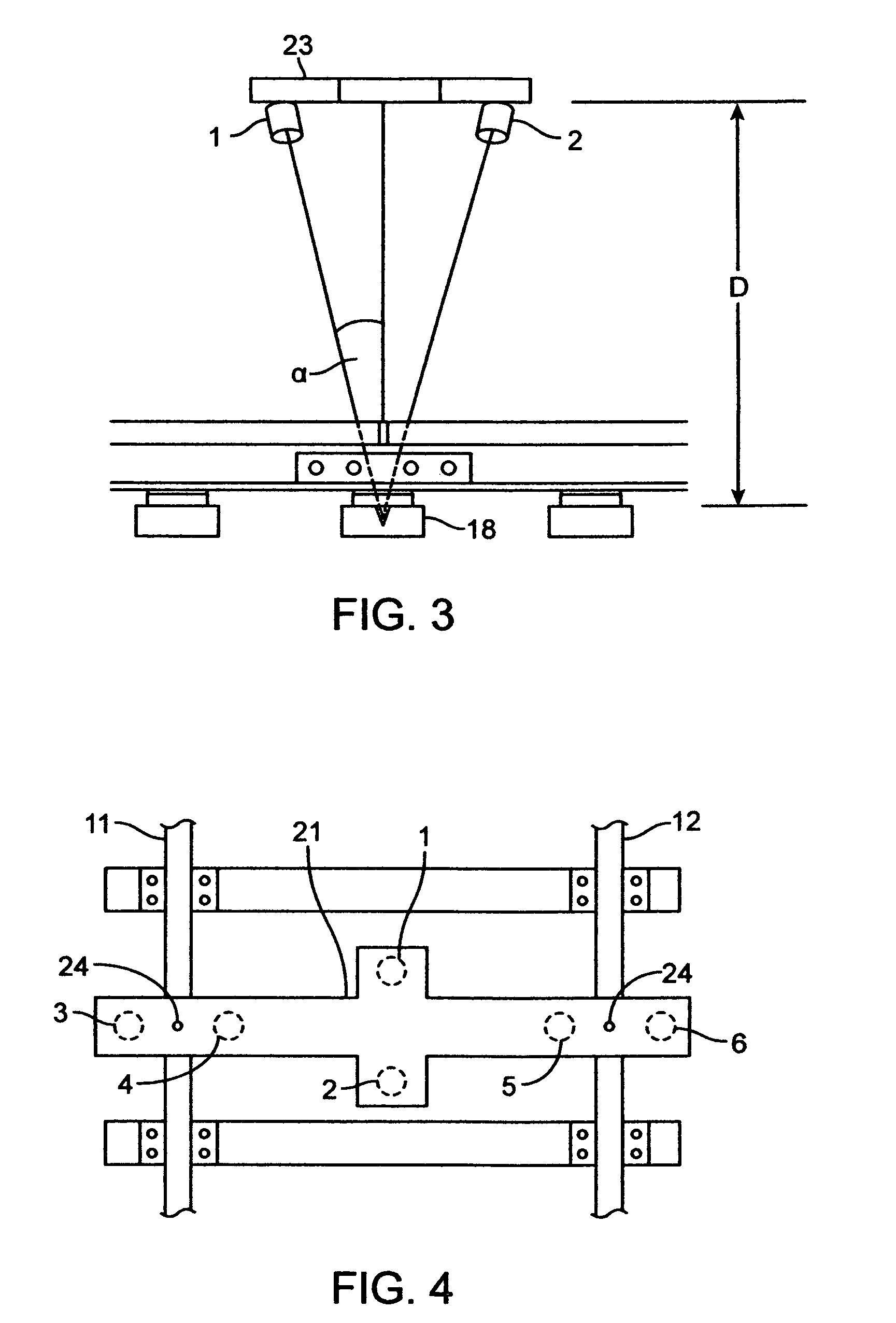High-speed railroad inspection using coordinated 3D cameras
a high-speed railroad and 3d camera technology, applied in the field of depth inspection, can solve the problems of time-consuming tactile approaches, laborious and long interpretation of charts and maps, and data transmission, and achieve the effect of accurately calculating the depth of certain objects
- Summary
- Abstract
- Description
- Claims
- Application Information
AI Technical Summary
Benefits of technology
Problems solved by technology
Method used
Image
Examples
Embodiment Construction
[0025]In order to emulate the depth-perception and 3D acuity of pairs of human eyes, the cameras come as pairs with highly compact electronics integral to their function. Two cameras forming each pair are separated by a distance determined by their application and work as a single unit. Each unit is adapted to its specific role (as described below).
[0026]FIG. 1 shows a bilaterally symmetrical structure 21 for holding three sets (pairs) of cameras, or six cameras. This consists of a transverse member 22 and a longitudinal member 23 of sufficient stiffness and damping to hold the three sets of cameras rigid and resonance-free when mounted. Two projections 24 are bolts or clamps for mounting the structure onto a suitable railcar. For standard gauge tracks the length of transverse member 22 is about 84″ and the length of longitudinal member 23 is about 24″.
[0027]FIG. 2 shows the arrangement of the transverse cameras on structural member 22. The distance (D) of structural member 22 above...
PUM
| Property | Measurement | Unit |
|---|---|---|
| length | aaaaa | aaaaa |
| distance | aaaaa | aaaaa |
| depth | aaaaa | aaaaa |
Abstract
Description
Claims
Application Information
 Login to View More
Login to View More - R&D
- Intellectual Property
- Life Sciences
- Materials
- Tech Scout
- Unparalleled Data Quality
- Higher Quality Content
- 60% Fewer Hallucinations
Browse by: Latest US Patents, China's latest patents, Technical Efficacy Thesaurus, Application Domain, Technology Topic, Popular Technical Reports.
© 2025 PatSnap. All rights reserved.Legal|Privacy policy|Modern Slavery Act Transparency Statement|Sitemap|About US| Contact US: help@patsnap.com



